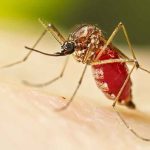Dr. N. Munal Meitei,
Environmentalist, email -nmunall@yahoo.in

The most important crisis, facing by humanity across the globe today is the climate change and its impact on our environment. The extreme climate what we are experiencing in Manipur today is also the effect of climate change. The climate change effects the socioeconomic ramifications. Over the last century atmospheric CO2 increased from a pre-industrial value of 278 ppm to 379 ppm and global temperature has risen by 0.74°C and the planet could become warmer by about 6°C by 2100.
Historically, mankind has adapted to climate variability around them for sustenance and such behavior has played a crucial role on the evolution of socioeconomic, political and cultural lives of people across the globe. However, the present warming trend is faster and abrupt than any other witnessed in recorded history.
Adaptation to climate change is the capacity to respond successfully to climate variability and change, in order to reduce adverse impacts and take advantage of new opportunities. A physical constraint is important, but most important is the social, economic and political adaptive capacity. As mankind is developing and will also continue, both temporal and spatial scales are very important for adaptation. Even if emissions are stabilized relatively now, climate change and its impacts will last for many years, and adaptation will be necessary.
The economic costs of adaptation to climate change are likely to cost billions of rupees annually for the next several decades, though the amount of money needed is unknown. The adaptation challenge grows with the magnitude and the rate of climate change. A theoretical, physiological limit for human adaptation is we cannot survive the average temperatures of above 35°C.
In an article in Nature, a team of scientists argue that adapting to climate change would be a more effective means of dealing with global warming than reducing emissions of greenhouse gases. United Nations Disaster Risk Reduction Office (UNISDR) recognizes climate change adaptation as part of the disaster risk reduction domain as it intends to reduce the risks that vulnerable populations might encounter due to climate change. IPCC also suggests that mitigation and adaptation should be complementary components of a response strategy to global warming.
Because of the projected climate disruption, adaptation is a necessary strategy at all scales because we cannot be sure that all climate change can be mitigated. In the long run more warming is inevitable, adaptation has the potential to reduce adverse impacts and to enhance beneficial impacts. Human and natural systems will to some degree adapt autonomously to climate change. But the planned adaptation can supplement autonomous adaptation on greater possibility.
The ability of human systems to adapt and cope with climate change depends on factors such as wealth, technology, education, infrastructure, access to resources, management capabilities and sociopolitical will. Populations and communities are highly variable in their endowments of these attributes, with developing nations being among those worst-placed to adapt to global warming.
Adaptation and mitigation can be viewed as two competing policy responses, with tradeoffs between the two. The people who bear emission reduction costs or benefits are often different from those who pay or benefit from adaptation measures. Economists, using cost-benefit analysis, have attempted to calculate an “optimal” balance of the costs and benefits between climate change impacts, adaptation and mitigation. The difficulties are we can not ascertain the future climate change damages and thus the future costs of adaptation.
The global climate change is altering the global rainfall patterns. Local land use and planning represent important avenues for adaptation to global warming. These forms of planning include changing to heat tolerant plant varieties, changing to water permeable techniques to absorb rainfalls and plan for permanent water storage.
This is the most important aspect as per India is concerned. Rain fed agriculture constitutes 51% of the country and accounts nearly 40% of total food production. As the global population swells, more food will be needed, but climate variability is likely to make successful farming more difficult. Extended drought can cause the failure of small and marginal farmers with resultant economic, political and social disruption.
Scientists have in the past tried to control the weather, for example by seeding clouds with chemicals to try to produce artificial rain when and where it is needed. The World Meteorological Organization (WMO) states that though it has some side effects, this method purposefully augments precipitation, reduction of hail damage, dispersion of fog and other types of cloud and storm modifications.
Another new method being developed involves replicating the urban heat island effect, where cities are slightly hotter than the countryside because they are more polluted and absorb more heat. This creates 28% more rain 20–40 miles downwind from cities compared to upwind. On the timescale of several decades, new weather control techniques may become feasible which would allow control of extreme weather such as hurricanes.
IPCC concluded that Geo-engineering options, such as ocean fertilization to remove CO2 from the atmosphere and to preserve sea ice or adjust thermohaline by diverting rivers to keep warm water away from sea ice has also the effective approach.
It is clear that humanity has always adapted to the changing climate coping with the strategies already exist in their communities. Traditional knowledge and indigenous techniques must be maintained and strengthened, otherwise adaptive capacity may be weakened as local knowledge of the environment is lost. Therefore, it is the right time to think of adaptive strategies for mankind to fit the changing climate and ultimately the global warming as it cannot be solved immediately.













